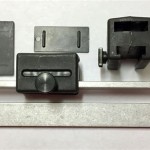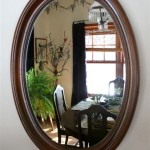How To Screen Mirror On Vizio TV Without WiFi
Screen mirroring, the act of displaying the content of a mobile device or computer screen on a larger display like a television, is a valuable tool for presentations, entertainment, and collaboration. While many modern smart TVs, including Vizio TVs, facilitate screen mirroring through WiFi-based protocols like Chromecast or Miracast, there are situations where a WiFi network is unavailable or unreliable. This article details methods for mirroring a screen to a Vizio TV without relying on a direct WiFi connection.
It's crucial to understand the limitations of each method before attempting to connect. While many smart TVs are designed with wireless connectivity in mind, the capacity to operate without WiFi depends on specific hardware and software features supported by both the TV and the source device. Using alternative connection methods might restrict certain functions or result in diminished picture quality compared to a wireless connection.
Before diving into the specifics, it's worth verifying the Vizio TV model's capabilities. Some older models might lack the basic hardware support required for screen mirroring through any method other than traditional wired connections. Consult the TV's user manual or the manufacturer's website for detailed product specifications and supported functionalities. This preliminary step can save time and prevent unnecessary troubleshooting.
Using an HDMI Cable for Direct Connection
The most reliable method for screen mirroring without WiFi involves using an HDMI cable to establish a direct physical connection between the source device and the Vizio TV. This method bypasses the need for any wireless network and provides a stable, high-quality connection for both video and audio.
Virtually all modern laptops, desktops, and many tablets come equipped with HDMI ports. Smartphones, however, often require an adapter to convert the device's charging port (USB-C or Lightning) to an HDMI output. These adapters are readily available and relatively inexpensive. Selecting a reputable adapter from a trusted brand is recommended to ensure compatibility and minimize potential signal degradation.
To connect using an HDMI cable, follow these steps:
- Locate the HDMI port on the Vizio TV. Most TVs have multiple HDMI ports, labeled HDMI 1, HDMI 2, etc. Note the port number to select the correct input source later.
- Connect one end of the HDMI cable to the HDMI port on the TV.
- Connect the other end of the HDMI cable to the HDMI port on the laptop or desktop. If using a smartphone or tablet, connect the appropriate adapter to the device and then connect the HDMI cable to the adapter.
- Turn on the Vizio TV.
- Using the TV remote, press the "Input" or "Source" button. This button allows the selection of different input sources connected to the TV.
- Navigate through the input options until the HDMI port to which the device is connected is selected (e.g., HDMI 1, HDMI 2).
- The screen of the connected device should now be mirrored on the Vizio TV.
Once connected, the display settings on the source device may need to be adjusted to optimize the mirrored image. For example, on a Windows laptop, pressing the Windows key + P brings up a projection menu with options to duplicate, extend, or show only on the second screen (the TV). Selecting "Duplicate" will mirror the laptop screen on the TV. Similarly, macOS users can adjust display settings in System Preferences > Displays to configure mirroring.
Using an HDMI connection offers several advantages. It provides a stable and reliable signal, free from the interference that can sometimes plague wireless connections. It also supports high resolutions and refresh rates, making it ideal for displaying videos, games, or presentations in high quality. The primary disadvantage is the physical cable, which can limit mobility and might require cable management to avoid clutter.
Using a USB-C to HDMI Adapter for Android Devices
Many modern Android smartphones and tablets feature a USB-C port, which supports DisplayPort Alternate Mode (DP Alt Mode). This technology allows video output over the USB-C port, facilitating screen mirroring through a USB-C to HDMI adapter.
Not all Android devices support DP Alt Mode. Device specifications should be reviewed to confirm compatibility before purchasing a USB-C to HDMI adapter. Devices lacking this feature will not be able to output video through the USB-C port. Additionally, some devices may require specific settings to be enabled for video output.
To mirror the screen using a USB-C to HDMI adapter:
- Purchase a USB-C to HDMI adapter that is compatible with the Android device. Ensure the adapter supports the desired resolution and refresh rate.
- Connect the USB-C end of the adapter to the USB-C port on the Android device.
- Connect one end of an HDMI cable to the HDMI port on the Vizio TV.
- Connect the other end of the HDMI cable to the HDMI port on the USB-C to HDMI adapter.
- Turn on the Vizio TV.
- Using the TV remote, press the "Input" or "Source" button and select the HDMI port to which the adapter is connected.
Once connected, the Android device's screen should be mirrored on the Vizio TV. Some Android devices may automatically detect the connection and adjust the display output accordingly. If not, check the device's display settings for options related to external displays or HDMI output. Some manufacturers might include proprietary screen mirroring apps that integrate with the USB-C connection, offering enhanced control over display settings and resolution.
The advantage of using a USB-C to HDMI adapter lies in its simplicity and portability. It provides a direct connection without relying on WiFi, making it suitable for environments where wireless networks are unavailable or unreliable. However, the video quality and performance can be affected by the quality of the adapter and the capabilities of the Android device.
Using a Wired Ethernet Connection with Specific Apps (Limited Applicability)
Certain media streaming applications, although designed primarily for WiFi connectivity, might support wired Ethernet connections on both the source device (e.g., a laptop) and the Vizio TV. This method essentially replaces the WiFi network with a physical Ethernet cable, creating a local area network (LAN) without requiring a wireless router.
This method is highly dependent on the specific applications being used and is not a universal solution for screen mirroring. Both the source device and the Vizio TV must be connected to the same Ethernet network, either through direct connection or via a network switch.
The process involves:
- Connecting both the source device (e.g., a laptop) and the Vizio TV to an Ethernet network. This can be achieved by directly connecting both devices to a network switch or router via Ethernet cables, even if the router is not connected to the internet.
- Ensuring that both devices have a valid IP address within the same subnet. This may require configuring static IP addresses on both devices if the network does not have a DHCP server.
- Opening the desired media streaming application on both the source device and the Vizio TV.
- Checking the application's settings for options to connect to devices on the local network. Some applications may automatically detect devices on the same network, while others may require manual configuration.
- Initiating the screen mirroring or casting process from the source device, selecting the Vizio TV as the target device.
This method is less straightforward than using HDMI cables or USB-C adapters and requires a basic understanding of networking concepts. It is primarily applicable in situations where certain media streaming apps are used and WiFi connectivity is undesirable or unavailable. The effectiveness of this method depends heavily on the specific applications used and their compatibility with wired Ethernet connections.
The primary advantage of using a wired Ethernet connection in this scenario is the increased reliability and stability compared to WiFi, particularly in environments with high wireless interference. However, the limited applicability and the need for Ethernet cables make it less convenient than other methods.
Ultimately, the best method for screen mirroring on a Vizio TV without WiFi depends on the available hardware, the specific use case, and the technical expertise of the user. HDMI connections offer the most reliable and versatile solution, while USB-C adapters provide a more portable option for compatible Android devices. Using a wired Ethernet connection is a niche solution applicable only to specific media streaming apps.

Top 3 Methods To Mirror Iphone Vizio Tv

How To Connect Phone Tv Without Wi Fi Techwiser

Top 3 Methods To Mirror Iphone Vizio Tv

How To Cast Screen Mirror Android Phone Vizio Tv D Series Chromecast

How To Mirror Iphone Tv Without Wi Fi

How To Mirror Iphone Tv Without Wi Fi

Vizio Smart Tv How To Wireless Screen Mirror Galaxy S8 S9 S10 S20 Phones

How To Mirror Iphone Tv Without Wi Fi

Vizio Smart Tv How To Wireless Screen Mirror Galaxy S8 S9 S10 S20 Phones

Top 3 Ways On How To Connect And Mirror Iphone Panasonic Tv








